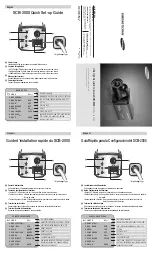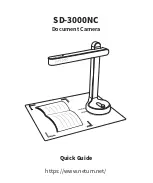
16
8.2 Bounce flash with a reflector card
The use of bounce flash with the integrated reflector card
can bring out highlights in the eyes
of human subjects:
Tilt the reflector head upwards by 90°.
Pull the reflector card
together with the wide-angle diffuser
from
above out of the reflector head and forwards.
Hold the reflector card
and push the wide-angle diffuser
back
into the reflector head.
9 Program flash mode
In the Program flash mode, some cameras mix the ambient light with the flashlight and
depending on the camera programming determine whether the flash is to be used as the
main light source or for fill-in light purposes. The camera automatically selects the appropriate
shutter speed/aperture combination and controls the flash in TTL mode.
the camera.
10 Automatic AF auxiliary light
The automatic AF auxiliary light
is activated in the flash unit by the camera when the ambient
lighting conditions become inadequate for automatic focusing.
A bright light is projected onto the subject, which the camera can use to focus. Depending on
vated AF sensor, the AF assist light has a range of approximately 2.5 m to 4 m
(with a standard 1.7/50 mm lens).
Parallax error between lens and AF auxiliary light limits the close-up range with the AF
measuring beam to approximately 0.6 m to 1 m.
To activate the automatic AF auxiliary light the camera has to
readiness. Various camera models support only the ca
auxiliary
light. In this case, the automatic AF auxiliary light of the flash unit is not activated
(as in the case of mirrorless cameras,
manual).
Low-speed zoom lenses can significantly curtail the range of the AF auxiliary light!
Various cameras support the AF auxiliary light in the flash unit only with
sensor. If a peripheral AF sensor is selected, then the AF auxiliary light beam will not be
activated in the flash unit!











































